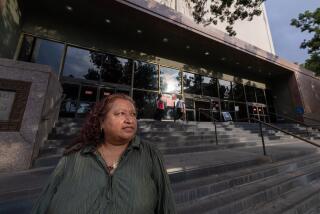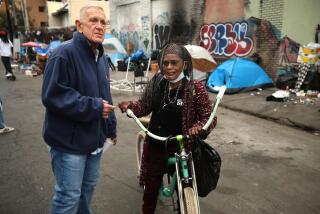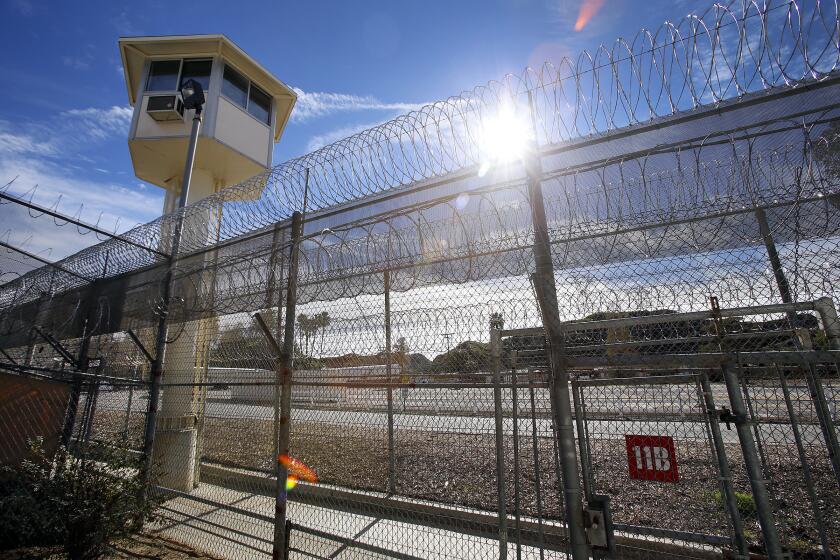Hearing Both Sides and Seeing the Middle
- Share via
Do you happen to live next to the neighbors from hell?
Would they say the same about you?
My family happens to be blessed with great neighbors, and maybe yours are that way too. But disputes are frequent in many places, so intense it takes a third party to settle things.
Erika Martinez, who mediates all kinds of disputes for the Orange County Human Relations Commission, said some resolution sessions show a pattern:
“The two sides turn their chairs away from each other; they won’t make eye contact. They’ll talk to me about one another, but won’t talk directly to each other. Sometimes emotions run so high they get out of hand.”
But there’s a flip side to that, one that Martinez said makes her job so enriching. That’s when the tempers simmer, the chairs get turned toward one another, and the two sides finally begin to understand where the other is coming from.
Last week I got a chance to sit in on one of the mediation-conciliation training sessions put on by the Human Relations Commission. The 28-hour courses are held several times a year to help bolster its volunteer force of mediators.
Training director Barbara Hunt put that day’s 19 volunteers through group exercises to let them see firsthand how tough it can be to reach a consensus. In one exercise, participants had to decide which of several candidates should be given a hospital’s only available heart transplant. Among the candidates was a pregnant 15-year-old and a scientist on the verge of an AIDS discovery.
One of Hunt’s groups came to easy agreement. Another reached agreement only under duress. The other two groups came up so hopelessly divided that some continued to argue even after the exercise was over. Hunt didn’t care whom they chose--she just wanted to show them how tough reaching agreement can be.
Did you think the others really listened to you? she asked. One young woman responded:
“I would have felt like they were listening to me if I had gotten them to agree with my choice.”
Lots of folks who can’t reach agreement wind up in court, with expensive lawyers and other court costs. Which is one reason why the Human Relations Commission got into the mediation-conciliation business.
“It’s a way to help bring justice to the public at little expense,” Hunt said.
Last year, the commission handled 1,147 cases, including housing complaints (usually landlord-tenant disputes), neighbor-versus-neighbor quarrels, consumer complaints against companies, domestic disputes and people unhappy with their jobs. On top of that, the commission teamed with other county agencies to handle 1,400 other cases that were headed for Small Claims Court. And that number is expected to grow this year.
The commission also has an outreach program, Common Ground, at community centers throughout the county. That’s where staff members like Martinez try to help those who have dispute problems but would never have thought to take them to the commission.
Don’t think that everything gets settled. Some cases still wind up in court or, in matters like domestic disputes, the commission mediator may say counseling is necessary. That brings up a point that Hunt and Martinez want me to make clear: Mediators are not counselors, and they’re not there to decide who’s right and who’s to blame.
“We don’t take sides,” Hunt said. “We just help the two sides understand each other so they can resolve the problem themselves.”
And it works, too, in 80% to 85% of the cases.
*
None of this could happen, of course, without the volunteers. Human relations commissions in most counties are forced to get by on lean budgets. To put on their programs, they have to rely on the community to help out.
The class I attended included two lawyers, a business consultant and several students from Cal State Fullerton. The students are taking the training for credit in a sociology course taught by professor Lorraine Prinsky, who managed to get a small grant to pay their expenses.
Most in training sessions agree to volunteer 120 hours in dispute resolutions in exchange for getting their training free of charge. Some donate even more. Martinez had taken Hunt’s class when she was a student at Fullerton College.
“I thought I knew a lot about handling situations, but the training really opened my eyes,” she said. She did so well as a volunteer, she was asked to join the staff.
Charles Yesson of Newport Beach, whose career has been in financial investments and merger consulting, said taking the class has been an invigorating experience. But mediation, he said, may be hard for him.
“In my business, I’ve had to push the clients, even be demagogic,” he said. “This is a chance to see the other side, the democratic process.”
In the session I attended, Hunt stressed the need to understand cultural differences. In fact, the course was expanded from 25 hours to 28 so culture could be emphasized more.
By the way, I agreed with those who would have given the heart transplant to the 15-year-old pregnant girl. But then, I’d probably make a lousy mediator.
*
Jerry Hicks’ column appears Monday and Thursday. Readers may reach Hicks by calling (714) 966-7789 or e-mail to jerry.hicks@latimes.com.
More to Read
Sign up for Essential California
The most important California stories and recommendations in your inbox every morning.
You may occasionally receive promotional content from the Los Angeles Times.













